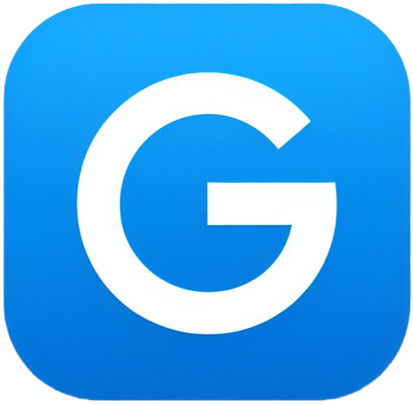9 Best Predictive Analytics Tools (2024)

An effective predictive analytics tool has the potential to revolutionize how businesses strategize for upcoming events and opportunities.
If you’re exploring machine learning to analyze data or seeking a user-friendly option, the following nine tools represent some of the premier predictive analytics software available today.
1. IBM SPSS
IBM SPSS stands as a comprehensive predictive analytics and data mining tool. Its SPSS modeler, featuring a drag-and-drop interface, enables users to anticipate future outcomes across various domains including healthcare, HR, supply chains, business operations, and crime prevention. SPSS streamlines data transformation into suitable formats for predictive analysis, offering easy-to-share visualizations. The absence of coding requirements makes SPSS accessible to corporate users.
Pricing: IBM provides customized pricing based on individual needs.
Pros and Cons:
Pros:
– SPSS boasts user-friendly drag-and-drop functionality, widening its appeal across industries.
– It finds utility in diverse sectors and applications.
Cons:
– Limited openness due to its non-open-source nature.
– Fixed pricing structure may not suit occasional users.
2. SAP Analytics Cloud
SAP Analytics Cloud offers a self-service, cloud-based modeling tool that seamlessly integrates with the SAP Business Technology Platform. It allows users to consolidate data stored in SAP tools, facilitating scenario simulations, automation through machine learning, and report generation. The provision of prebuilt business dashboards enhances accessibility for novice predictive analytics users.
Pricing: SAP Analytics Cloud costs $432 per user annually, with a minimum requirement of five user seats.
Pros and Cons:
Pros:
– Smooth integration with other SAP products.
– Prebuilt business dashboards simplify adoption.
Cons:
– Dependent on other SAP products for optimal utility.
– Minimum licensing requirements may be prohibitive for smaller teams.
3. Microsoft Power BI
Microsoft Power BI comprises a suite of business intelligence tools and connectors, enabling data manipulation and modeling from various Microsoft applications. Users can access, analyze, and predict outcomes from data stored across different platforms, including corporate data warehouses and Excel spreadsheets. Power BI provides options for creating visualizations, shareable dashboards, and reports, although proficiency in machine learning models is necessary for predictive modeling.
Pricing: Advanced predictive modeling features are unlocked with a premium subscription at $20 per user monthly.
Pros and Cons:
Pros:
– Predictive analytics capabilities extend even to small data sets.
– High customizability suits diverse requirements.
Cons:
– Requires familiarity with machine learning algorithms.
– Limited utility outside Microsoft-centric environments.
4. Spotfire
Spotfire, formerly TIBCO Spotfire, serves as a self-service data analytics platform supporting predictive analytics, data visualization, and dashboard creation. Its intuitive interface caters to both novice and experienced users, offering point-and-click configuration without coding requirements. Spotfire enables analysis and visualization of data from various sources, facilitating predictive insights and informed decision-making.
Pricing: Customized pricing based on user license requirements, with a 30-day free trial available.
Pros and Cons:
Pros:
– No-code configuration empowers users at all skill levels.
– Versatile data integration capabilities.
Cons:
– Lacks comprehensive AI and ML configuration.
– Absence of free access post-trial period.
5. Tableau
Tableau stands out as a visual analytics and data analysis platform supporting scenario modeling and predictive analytics. Its drag-and-drop tools facilitate adjustments to predictive models and data visualization, catering to diverse business needs. Tableau integrates seamlessly with Salesforce CRM, offering predictive insights and analytics for Salesforce users.
Pricing: Starts at $42 per user monthly, with additional view-only licenses available at $15 per user monthly.
Pros and Cons:
Pros:
– Intuitive drag-and-drop interface for dashboard creation.
– Cost-effective view-only licenses for large teams.
Cons:
– Limited customization compared to other tools.
– Salesforce integration may limit utility for non-Salesforce users.
6. Oracle Analytics
Oracle Analytics employs machine learning algorithms to develop predictive models, offering algorithms for classification, regression, and clustering. The platform’s flexibility enables users to train and apply models across datasets, requiring varying degrees of data and machine learning expertise.
Pricing: Pricing is based on usage and requires consultation with Oracle for custom pricing.
Pros and Cons:
Pros:
– Free access to limited features and computing hours.
– Provides a selection of trainable machine learning algorithms.
Cons:
– Requires a learning curve for effective utilization.
– Lack of transparent pricing for heavy users.
7. Alteryx Designer
Alteryx Designer leverages AI for enterprise analytics, empowering users to develop predictions across diverse datasets. Its compatibility with numerous data sources, including Adobe Analytics and Google Analytics, enhances data accessibility. Alteryx offers drag-and-drop tools for prediction and workflow creation, with advanced capabilities for R software environment users.
Pricing: Starts at $4,950 per user annually for cloud software, with a minimum of three user licenses required.
Pros and Cons:
Pros:
– Automates data analysis and predictions through machine learning.
– Drag-and-drop interface for code-free workflow creation.
Cons:
– Minimum user licensing requirements may be costly for small teams.
– Learning curve for R software environment integration.
8. IBM Watson Studio
IBM Watson Studio employs deep learning and neural networks for pattern analysis, enabling users to uncover insights from diverse datasets. It requires familiarity with programming languages such as Jupyter notebooks, Python, and R for effective utilization. Watson Studio offers pre-trained models and AI automation tools for streamlined data analysis.
Pricing: Usage-based pricing, with free access for limited usage and $1.02 per hour for heavier resource consumption.
Pros and Cons:
Pros:
– Leverages neural networks for comprehensive data analysis.
– Pre-trained models and NLP tools for quick insights.
Cons:
– Requires proficiency in machine learning algorithms.
– Lack of drag-and-drop functionality.
9. KNIME
KNIME is an open-source analytics platform offering drag-and-drop workflow creation across 300+ data sources. Its user-friendly interface enables users to build workflows for data analysis, trend prediction, and decision making without coding knowledge.
Pricing: KNIME is free for basic usage, with subscription options starting at $285 per month for enhanced collaboration features.
Pros and Cons:
Pros:
– Free open-source platform with no coding requirements.
– Intuitive drag-and-drop workflow creation.
Cons:
– Lack of prebuilt workflows out of the box.
– Limited advanced analytics capabilities.
Conclusion
Selecting a predictive analytics tools is vital in leveraging big data effectively. Alongside predictive analytics tools, exploring ongoing big data trends and advancements can enhance data utilization and scalability.
See Also,
